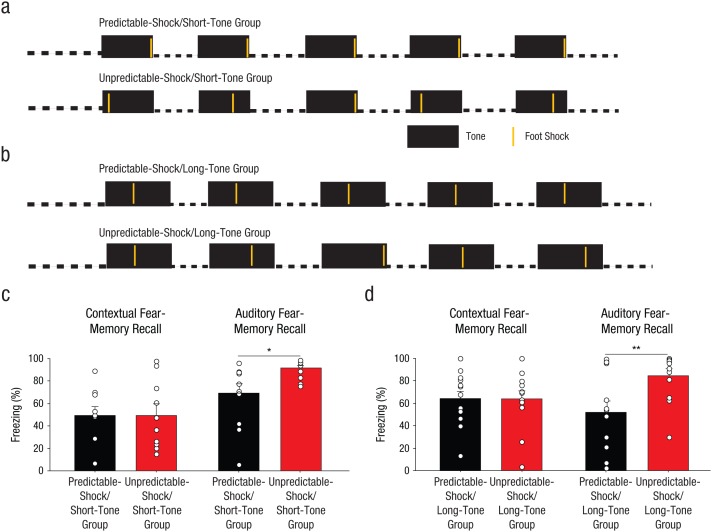Fig. 1.
Method and results for Experiment 1. Two of the groups of rats (n = 10 per group) were fear conditioned with five pairings of a 30-s tone with a 1-s foot shock, as illustrated in (a); there was a 210-s intertrial interval (ITI). For the predictable-shock/short-tone group (which received predictable training and a 30-s tone), each tone coterminated with a foot shock. For the unpredictable-shock/short-tone group (which received unpredictable training and a 30-s tone), each tone was paired with a foot shock that occurred pseudorandomly during the tone. Thus, interstimulus intervals (ISIs) were shorter for this group than for the predictable-shock/short-tone group. The other two groups of rats, the predictable-shock/long-tone and unpredictable-shock/long-tone groups, were fear conditioned the same way, except that the tones were 42 s instead of 30 s, as illustrated in (b). For the unpredictable-shock/long-tone group, each tone was paired with a foot shock that occurred pseudorandomly during the tone, so the average ISI was longer for this group than for the predictable-shock/long-tone group. The bar graphs show the mean percentage of time the rats displayed freezing behavior in each (c) short-tone group and (d) long-tone group, separately for contextual fear-memory recall and auditory fear-memory recall. The small open circles represent the percentage of time that individual rats displayed freezing behavior. Error bars represent +1 SEM. Asterisks indicate significant differences between groups (*p < .05, **p < .01).

